On April 21, 2016, Prince was found dead at age 57 in an elevator at his Paisley Park estate outside of Minneapolis, and an investigation later revealed that the Vicodin he thought he'd taken was actually a counterfeit pill laced with fentanyl.
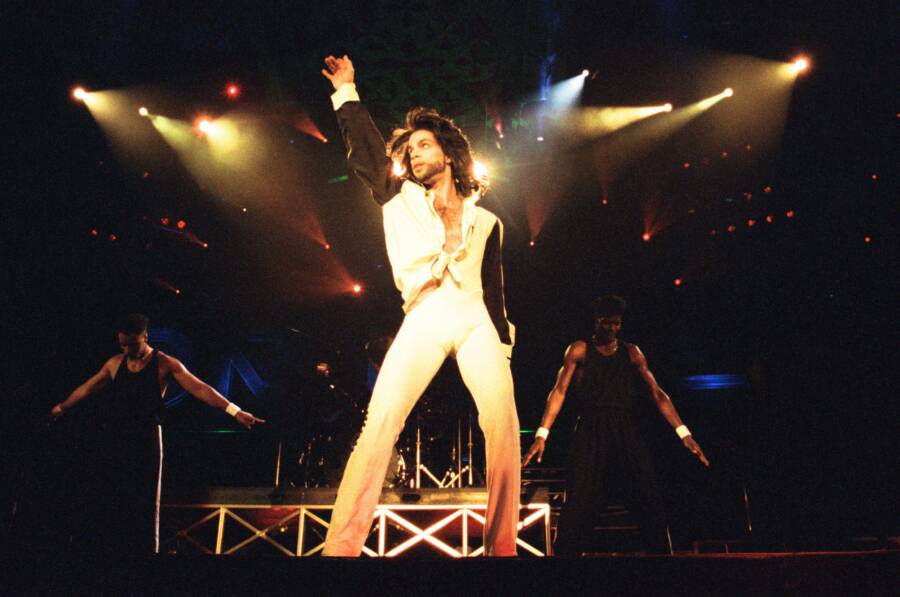
Trinity Mirror/Mirrorpix/Alamy Stock PhotoThe legendary artist Prince was just 57 when he died in 2016.
The allure of Prince’s music was undeniable. After skyrocketing to success in the 1980s thanks to his unique musical talents and provocative onstage presence, Prince cemented himself as one of the biggest superstars in the world, with a career spanning about 40 years.
Despite his success, however, Prince’s career wasn’t always steady. In the 1990s, amid disputes with his label Warner Bros. Records, Prince dropped his name and started referring to himself as an unpronounceable glyph. During this time, confused reporters and fans called him the “artist formerly known as Prince.” In the end, though, it proved to be just a bump in the road.
After being freed from his contractual obligations at Warner Bros., Prince had something of a resurgence, performing with Beyoncé at the 2004 Grammys and being inducted into the Rock & Roll Hall of Fame. He continued to put out music, and he received numerous accolades, including being featured in TIME magazine’s “100 Most Influential People in the World” in 2010.
Unfortunately, things came to a sudden end on April 21, 2016, when news of Prince’s death stunned his loved ones and his devoted fans across the globe. Prince was found dead at age 57 in an elevator at his Paisley Park estate just outside of Minneapolis, Minnesota, just a week after he had been hospitalized for what was rumored to be a severe case of the flu.
A subsequent investigation, however, revealed how Prince died, and it had nothing to do with the flu. As it turned out, decades of performances had taken a toll on Prince’s body, leading him to secretly turn to opioids to manage the pain. Amidst his hidden battle with addiction, Prince died from an accidental overdose of fentanyl, a synthetic opioid 50 times more powerful than heroin. Tragically, Prince likely thought he was taking Vicodin — but he instead took counterfeit pills that had been laced with fentanyl.
As more details about Prince’s death came to light, one question emerged: Who had supplied the singer with the fentanyl-laced pills?
Prince’s Early Life And Rise To Fame
Prince Rogers Nelson was born on June 7, 1958 in Minneapolis, Minnesota. He was the son of musicians John L. Nelson and Mattie Della Shaw Baker. Named after his father’s most popular stage name, Prince Rogers, he was reportedly unhappy with his name and asked to be called “Skipper” as a child, according to Prince: Inside the Music and the Masks.
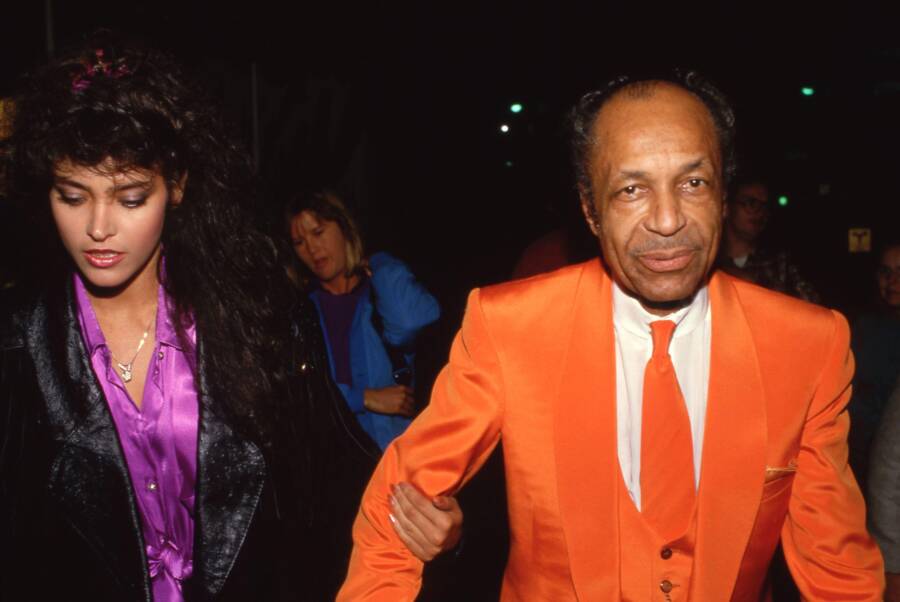
MediaPunch Inc/Alamy Stock PhotoPrince’s father, John L. Nelson, in 1986.
Of course, it seems that his ire for his name eventually faded, given that he used his first name as his stage name for most of his career. And given Prince’s parents’ history with music, it was perhaps unsurprising when their son also developed a love for music at an early age. In fact, Prince wrote his first song, “Funk Machine,” on his family’s piano at just seven years old.
When Prince was 10, his parents divorced. His mother remarried a man named Hayward Baker, who took Prince to see James Brown in concert — an event that inspired Prince and influenced his own art later in life.
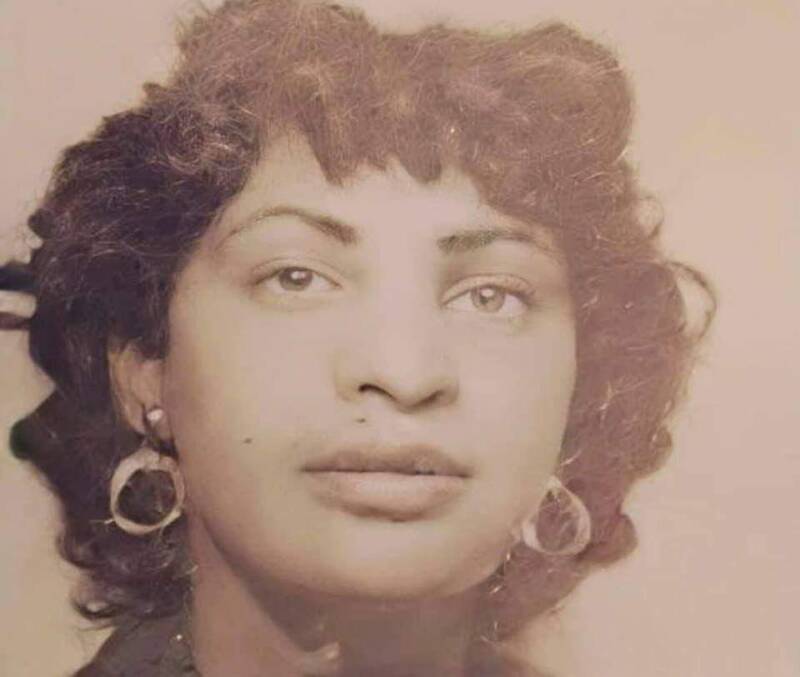
Find a GravePrince’s mother, Mattie Della Shaw Baker.
Though Prince initially split his time between his mother’s home and his father’s home, he had complicated relationships with both of his parents, and he later ended up living with his neighbors, the Andersons. He and the Andersons’ son, André, became close friends and musical partners, eventually forming a band together called Grand Central.
In the meantime, Prince was working on his own music, and after recording a demo tape of his original material in 1976, he caught the attention of some people in the music industry. This led to him signing a generous deal with Warner Bros. in 1977 — one that gave Prince a decent level of artistic control with his music and ownership of his publishing rights.
Prince released his first album, For You, in 1978. And from then on, it seemed like there was no stopping the soon-to-be superstar artist.
The 1980s And 1990s Propelled Prince To International Stardom
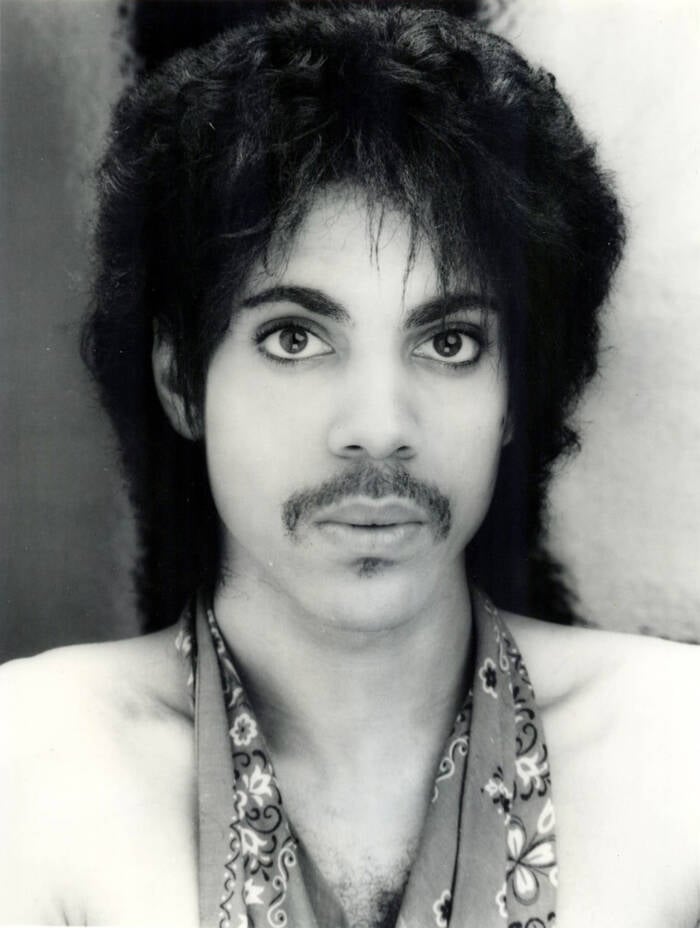
Wikimedia CommonsPrince in 1980.
After the release of his second album, Prince, in 1979, Prince earned his first Top 20 hit with “I Wanna Be Your Lover.” The following year saw the release of Dirty Mind, followed up in 1981 with Controversy, both of which boasted hits. But it was 1982’s double album 1999 that truly put Prince on the map.
As the first album credited to Prince and the Revolution — a band that featured Mark Brown and Lisa Coleman — 1999’s release was followed up with a six-month tour. 1999 was succeeded by the film, and accompanying album, Purple Rain, which netted Prince a No. 1 spot for film, single, and album in the U.S. all at once. Prince also became a target for the Parents’ Music Resource Centre, which campaigned against sexually explicit lyrics.
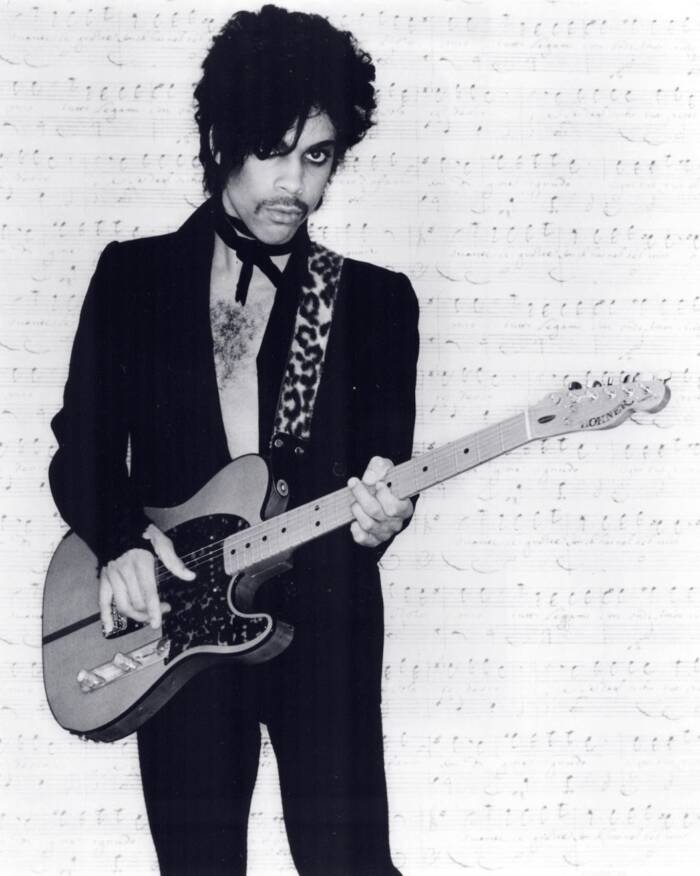
Wikimedia Commons Prince attracted adoring fans — and controversy — until the day he died.
Despite his willingness to provoke — and the pleasure he seemingly took in being provocative — Prince largely kept to himself. He was notoriously private and even took a break from live performances in the mid-1980s, though this, of course, did little to halt his career. The Revolution disbanded, but Prince had recorded enough material to release the double album Sign o’ the Times in 1987 and the soundtrack for Tim Burton’s Batman in 1989.
He stepped back into the spotlight with a collaboration with Madonna on “Love Song,” and Sinéad O’Connor’s cover of “Nothing Compares 2 U” boosted Prince’s profile even more. Riding this wave of momentum, Prince made another film-album combo, Graffiti Bridge, a sequel to Purple Rain that failed to achieve the same box office success as its predecessor. Still, as far as his music was concerned, Prince was as good as he’d ever been.
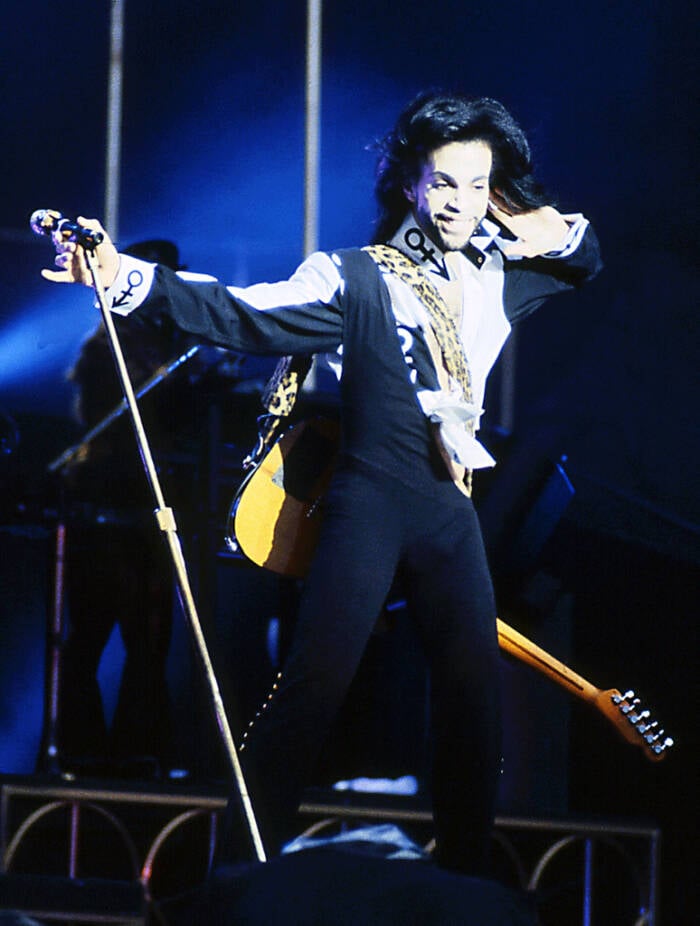
Wikimedia CommonsPrince performing in Tokyo, Japan during the Nude Tour in 1990.
That’s why, in 1992, Warner Bros. offered him a historic $100 million deal — the “largest recording and music publishing contract in history,” according to a 1992 report from the Los Angeles Times. The contract allowed Prince the freedom to pursue TV, film, book, and merchandising deals separately — but, notably, robbed Prince of the ownership of his master recordings.
This latter detail would ultimately become a point of major contention after the release of Love Symbol Album and prompt Prince to not just have a falling out with his record label, but also to change his name entirely.
The Artist Formerly Known As Prince
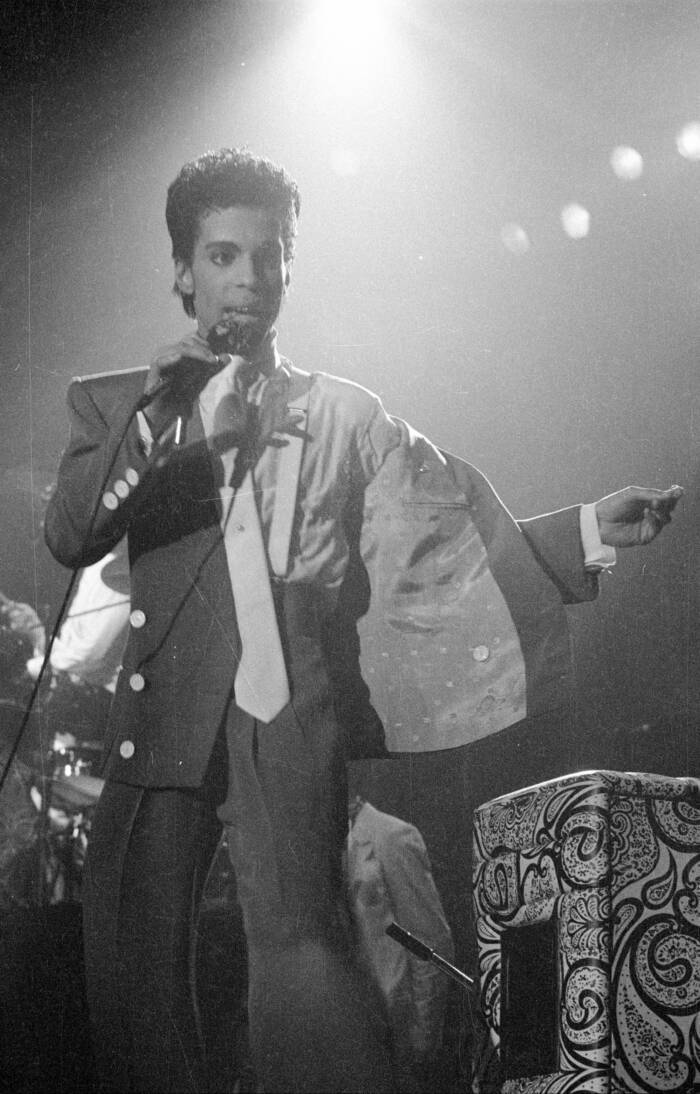
Wikimedia CommonsPrince performing in Brussels in 1986.
Officially, Prince had changed his name to the so-called “love symbol” that appeared on the album, a sort of fusion of the gender symbols for a man and a woman. However, this was entirely impossible for fans to pronounce, so he was more often referred to as the “artist formerly known as Prince.” During his public appearances, he also wrote the word “SLAVE” on his cheek, just to make his feelings about his record label perfectly clear.
Although much of the dispute revolved around his master recordings, Prince also took issue with the slower release schedule that Warner Bros. wanted for his music. Despite this, he still released three albums between 1992 and 1996: Come, the Black Album, and The Gold Experience. In 1996, however, he and Warner Bros. reached a settlement, and he would soon be released from all contractual obligations, leading to the release of two more records. The first, Chaos and Disorder, was his last contractual record for Warner Bros. The second, Emancipation, was the first on his NPG label.
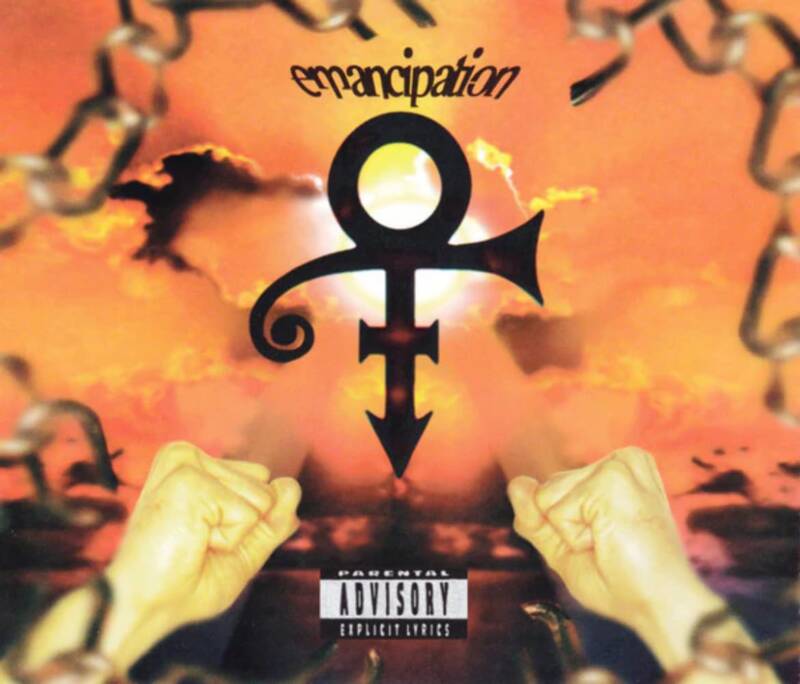
NPGThe album artwork for Prince’s Emancipation, featuring the “love symbol” he used as his name.
In 1996, Prince also married 22-year-old backing singer and dancer Mayte Garcia, and the two welcomed a son named Gregory. Sadly, due to a rare genetic disorder known as Pfeiffer Syndrome, Gregory died just days after his birth, and that loss caused a rift in the couple’s relationship. They divorced in 2000 — around the same time that Prince began using his name again.
Over the next decade and a half, Prince would go on to receive numerous accolades and acknowledgments. In 2004, he performed alongside Beyoncé at the Grammy Awards and was inducted into the Rock & Roll Hall of Fame. He followed this up with the album Musicology, which received two Grammys, and in 2006, he released the album 3121, as well as the single “Song of the Heart” for the animated film Happy Feet. That single soon earned Prince a Golden Globe for Best Original Song.
In 2007, Prince performed during the Super Bowl halftime show, an event watched by more than 140 million people, during which he performed several songs from Purple Rain, as well as covers of songs by bands and artists like Queen and Bob Dylan. That performance would, in 2010, be named by Billboard as the greatest Super Bowl performance of all time.
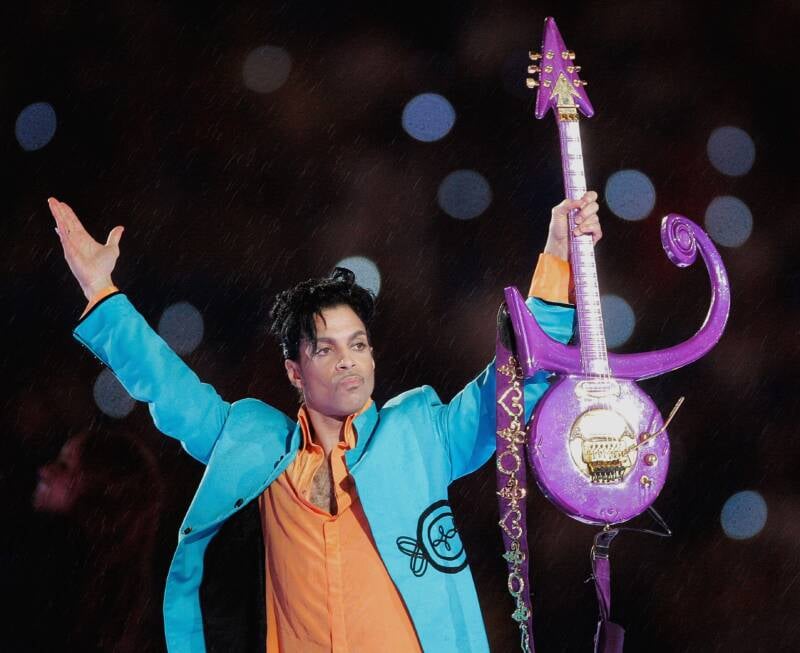
Abaca Press/Alamy Stock PhotoPrince during the halftime show at the Super Bowl in Miami, Florida on February 4, 2007.
The same year, Prince was featured in TIME magazine’s “100 Most Influential People in the World,” given a Lifetime Achievement Award by the BET Awards, and inducted into the Grammy Hall of Fame. He released several more records, appeared on the sitcom New Girl in 2014, and became a prominent figure in the push for better deals for musical artists.
Then, in 2016, Prince made headlines once again — only this time, it was because the legendary musician had tragically died at age 57.
How Did Prince Die? Inside His Accidental Fentanyl Overdose
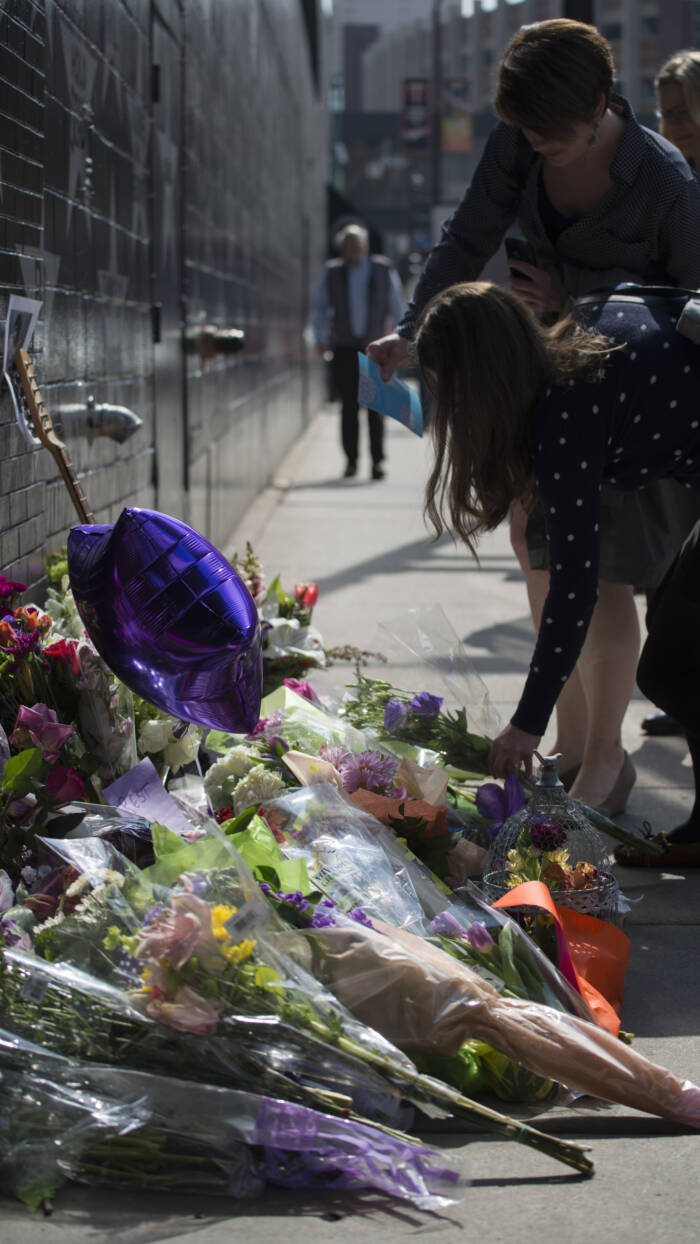
Wikimedia CommonsFans leaving flowers at a small, makeshift memorial for Prince.
About a week before Prince’s death in April 2016, he overdosed on pain medication while on a flight. His plane had to make an emergency landing at a hospital, and he had to be revived with two doses of Narcan.
Since Prince kept his personal life so private, even his closest friends reportedly did not know that he was struggling with an opioid addiction until this point. Many of his staff members were extremely concerned.
Just one day before Prince died, his team reached out to Howard Kornfeld, an addiction specialist in California, to see if he could help the singer, and the doctor quickly sent his son, Andrew Kornfeld, to meet the artist and hopefully form a safe treatment plan. But tragically, Kornfeld arrived at Prince’s Paisley Park compound in Chanhassen, Minnesota the next morning, on April 21, 2016, to find the 57-year-old dead in an elevator.
Reports initially spread that Prince possibly died because of a severe case of the flu — supposedly the reason for his recent hospitalization — but this incorrect theory about his death didn’t linger for long.
An autopsy report determined that Prince had died of an accidental overdose of fentanyl, prompting a more thorough investigation by authorities to determine what happened. Reportedly, Prince had injured himself several times over the years, especially when he was on tour, and he was relying on painkillers to manage the pain. Tragically, the painkillers he was given in April 2016 were laced with fentanyl. Authorities wanted to find out who gave Prince the painkillers — and whether they knew they were laced.
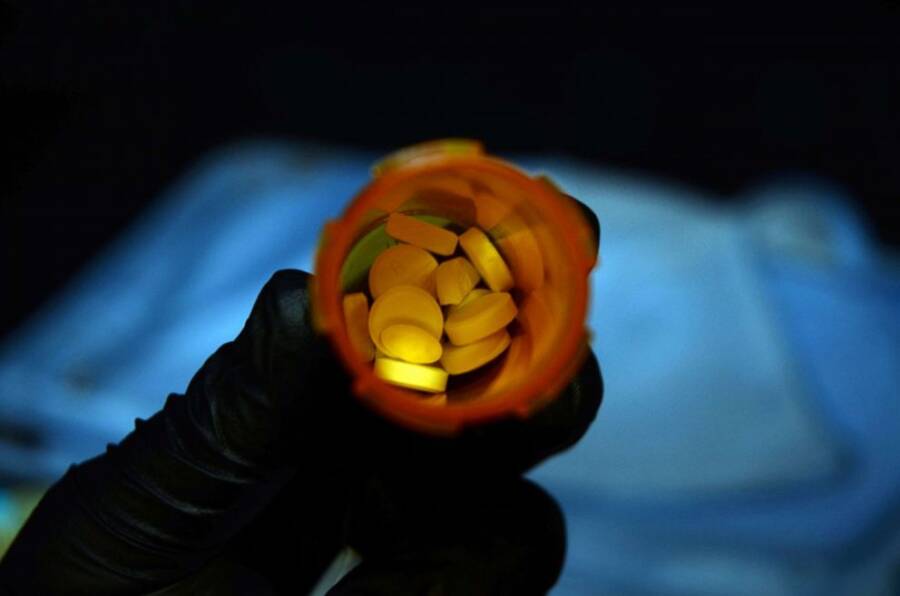
Carver County Sheriff’s OfficePills found in Prince’s home during the investigation into his death.
In 2018, ABC News reported on the police investigation. Per the report, authorities found pills scattered throughout Prince’s home, some in blankets and others mixed together in the same bottle. Carver County Attorney Mark Metz said that Prince likely believed that he was taking ordinary Vicodin — and had no clue that he was taking counterfeit pills laced with fentanyl.
“Prince had no idea he was taking a counterfeit pill that could kill him,” Metz said. The investigation, unfortunately, was unable to determine who provided Prince with the fentanyl-laced pills that led to his untimely demise. Because of this, no one would be criminally charged in Prince’s death.
Police did investigate the doctor Michael T. Schulenberg, who prescribed Prince an opioid painkiller shortly before his death, followed by a medication used to treat opioid withdrawal. Schulenberg was found to have violated the Controlled Substances Act when he illegally wrote a prescription for Prince in someone else’s name, but he denied liability in regard to the artist’s death.
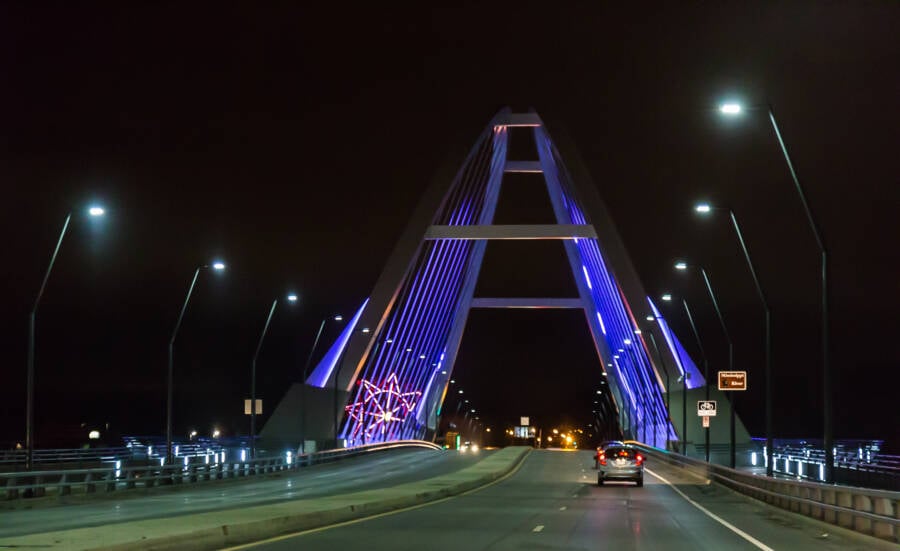
Wikimedia CommonsThe Lowry Bridge in Minneapolis lit up purple after Prince’s death. Many fans were shocked when they learned how Prince died, especially since his battle with addiction had been so hidden.
Schulenberg agreed to pay $30,000 in order to settle civil charges relating to the illegal prescription, but the settlement was “neither an admission of facts nor liability by Dr. Schulenberg,” according to court records. Prosecutors also reportedly clarified in another letter to Schulenberg’s attorneys that the doctor was not the target of a federal criminal investigation.
Ultimately, it remains unclear how Prince received the fentanyl-laced pills before his death. Even those closest to him seemingly had no idea that he was struggling with an opioid addiction until it was too late.
“It started… making sense, though, just his behavior sometimes and change of mood and I’m like, oh this is what, I think this is what’s going on, that’s why I took the initiative and said, let’s go to my doctor, because you haven’t been to the doctor, let’s check it all out,” Prince’s friend and bodyguard Kirk Johnson told investigators, per a transcript of an interview. “That’s what [angers me], ’cause it’s like, man, how did he hide this so well?”
After reading about how Prince died, learn about the final days of Elvis Presley and the tragic demise of Janis Joplin.





